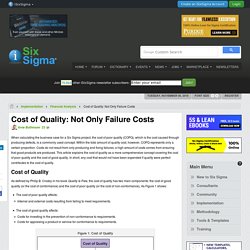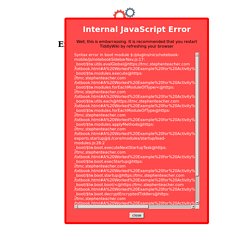Zoom
Trash

BTEC NEW Unit 4 Ass 2 TMC. Things to Remember. Unit 4, Assignment 2, Lesson 1, Costs. Unit 4 Assignment 2 Lesson 2 :Introduction to Activity Based Costing. Unit 4 Assignment 2 Lesson 3: Quick Excel introduction. Unit 4 Assignment 2 Lesson 4: What to do with the case study. The difference between direct costs and indirect costs. What are Indirect Costs? (with pictures) Direct Costs and Indirect Costs Defined. Manufacturing costs may be classified as direct costs and indirect costs on the basis of whether they can be attributed to the production of specific goods, services, departments or not.

Direct Costs Direct costs can be defined as costs which can be accurately traced to a cost object with little effort. Cost object may be a product, a department, a project, etc. Learn About Direct and Indirect Costs in Pricing. By Rosemary Peavler Updated August 17, 2018 As a business owner, it's important to set your product prices high enough to cover your production costs, turn a profit, and still remain competitive with other businesses.

To accomplish this, you must track your firm's production costs, which include your company's direct costs, such as raw materials, and also any indirect costs, also known as overhead, associated with producing your product. This lays the foundation for your company's product prices. However, if you charged only this price, you would recover your costs but make zero profit. What is indirect cost? definition and meaning - BusinessDictionary.com. Indirect costs. Indirect costs are costs used by multiple activities, and which cannot therefore be assigned to specific cost objects.

Examples of cost objects are products, services, geographical regions, and customers. Instead, indirect costs are needed to operate the business as a whole. Direct vs. Indirect Costs: Classifying Business Expenses. Photofriday / Getty Images As the owner of a startup or small business, there are crucial aspects you should understand to put your business on the path to success.

One of those aspects is understanding the distinction between direct and indirect costs when pricing your products or services. When you know the true costs involved with producing and providing your goods or services to consumers, you can price both competitively and accurately. There's another benefit as well: Certain costs, both direct and indirect, are tax-deductible. And if you ever apply for and receive a grant, there are several rules around the types of indirect costs – and the maximum amount – you can claim.
ERP Software and Quality Issues in Manufacturing. It is not uncommon for studies to indicate that cost of quality for manufacturers is typically 35% or higher as a percent of total sales.

This number can be astounding to some, and we will attempt to expand the details behind these numbers. By the end of this article, we hope you will have a better handle on your costs of poor quality, to help you make informed decisions on the directions you need to take in regard to this area. Many companies have found quality as an area that they can research and resolve with big benefits and, not so big an investment. Hidden Costs. The hidden costs in manufacturing - The Fabricator. Taken individually or in combination, hidden costs greatly affect a company’s financial and competitive performance.

FABTECH® just keeps getting better. In fact, the entire purpose of FABTECH is improvement. But hidden in the flash of new and better equipment and the appeal of the latest practices and methods is the real question: How do I reduce my total unit costs to generate a sustainable competitive advantage? In other words, how do I improve beyond my company’s current norm, but also more than the competition? To do this, you have to reduce those costs, and not just by improving the throughput rate of a given machine. Over the past year in this column I have addressed a number of topics related to this. Sometimes the what part is pretty apparent; you may need to improve the capabilities of people or machines.
There are various hidden cost drivers. Information The amount of information flying around in high-product-mix shops still amazes me. A lot can go wrong. Searching Downtime. Cost of Quality: Not Only Failure Costs. When calculating the business case for a Six Sigma project, the cost of poor quality (COPQ), which is the cost caused through producing defects, is a commonly used concept.

Within the total amount of quality cost, however, COPQ represents only a certain proportion. Costs do not result from only producing and fixing failures; a high amount of costs comes from ensuring that good products are produced. This article explains the cost of quality as a more comprehensive concept covering the cost of poor quality and the cost of good quality. In short, any cost that would not have been expended if quality were perfect contributes to the cost of quality. ERP Software and Quality Issues in Manufacturing. 4 hidden costs of poor project planning - Project Management Insight. There are some basic things that people will see when they consider the cost of poor project planning.

I would like to suggest that there are more ‘hidden’ costs that aren’t always visible. In this post I will talk about four hidden costs of poor project planning and once identified you might be able to stop them from occurring with better planning. Reputation cost The reputation of not only the Project Manager, but team members needs to be factored into the hidden cost of poor planning. A project manager can easily gain a poor reputation from bad planning, which will strongly impact on his/her ability to manage other projects, not only within their own organisation, but also elsewhere. The Jackson 5 - ABC. Introduction to ABC. Built from branch 'tiddlywiki-com' at commit f49c55fe3c6c250fb46372b43d6b8f73fa532790 of at 2019-08-09 14:49:54 UTC Kookma plugin library is a set of plugins, themes, and scripts, to extend functionality and add new features to Tiddlywiki.

For detail information visit the library at [[GitHub| It is recommended to backup your data before installing any plugin, theme, or script. To use in other wikis, drag and drop this link to those wikis: [[Kookma Plugin Library|$:/config/KookmaPluginLibrary]] $:/core/ui/EditTemplate/tags ~WikiLabs plugin library latest version! ABC Worked Example. Built from branch 'tiddlywiki-com' at commit f49c55fe3c6c250fb46372b43d6b8f73fa532790 of at 2019-08-09 14:49:54 UTC Kookma plugin library is a set of plugins, themes, and scripts, to extend functionality and add new features to Tiddlywiki.

For detail information visit the library at [[GitHub| It is recommended to backup your data before installing any plugin, theme, or script. To use in other wikis, drag and drop this link to those wikis: [[Kookma Plugin Library|$:/config/KookmaPluginLibrary]] $:/core/ui/EditTemplate/tags ~WikiLabs plugin library latest version! Advantages & Disadvantages of Traditional Costing. Calculating the costs of the goods or services offered is essential for businesses to maintain profitability. Direct costs like supplies and the labor of employees who manufacture a product or deliver a service provide some of the information that companies need to assess their expenses accurately. But they also must account for indirect costs like overhead expenses relating to facilities, utilities or administration. What Types of Businesses Do Activity-Based Costing? When using accounting standards to evaluate fixed costs, there are a number of approaches one can take.
Each one will tell a different story about these overhead costs and how they will contribute to a final price point. While assumptions can be made to roughly divide fixed costs out over units produced or machine hours, there are other methods that can be used to divide costs out in a way that tells the business a little bit more about the way internal costs all play out. TL;DR (Too Long; Didn't Read) The History of Activity-Based Cost Accounting. Cost accounting began as a way to keep track of the true cost of an item or service by calculating the direct and indirect costs needed to produce that item or complete that service. Activity-based cost accounting (also called ABC for activity-based costing) is a method of accounting that gathers overhead costs for each activity performed by a company, then matches the costs to whatever or whomever is causing that activity.
ABC is a more accurate way to attribute costs to activities and products than using traditional cost accounting methods. Evolution of Activity-Based Cost Accounting Before there was ABC, there was cost accounting. Advantages & Disadvantages of Activity-Based Costing. "Costing" is when you break down business expenses and assign them to different parts of your business. You can cost your expenses such as materials, workforce and overhead based on geographic regions, customer accounts or the expenses per product. Activity-based costing (ABC) is a special approach to overhead, assigning the cost to items that actually use it.
It's also known as activity-based allocation. ABC and Overhead. Traditional Costing Vs. Activity-Based Costing. Costing. Activity Based Costing Exercise - Knowledge Grab. Activity-Based Costing: Is ABC worth the time and effort? ABM techrpt 0401. Coursera.